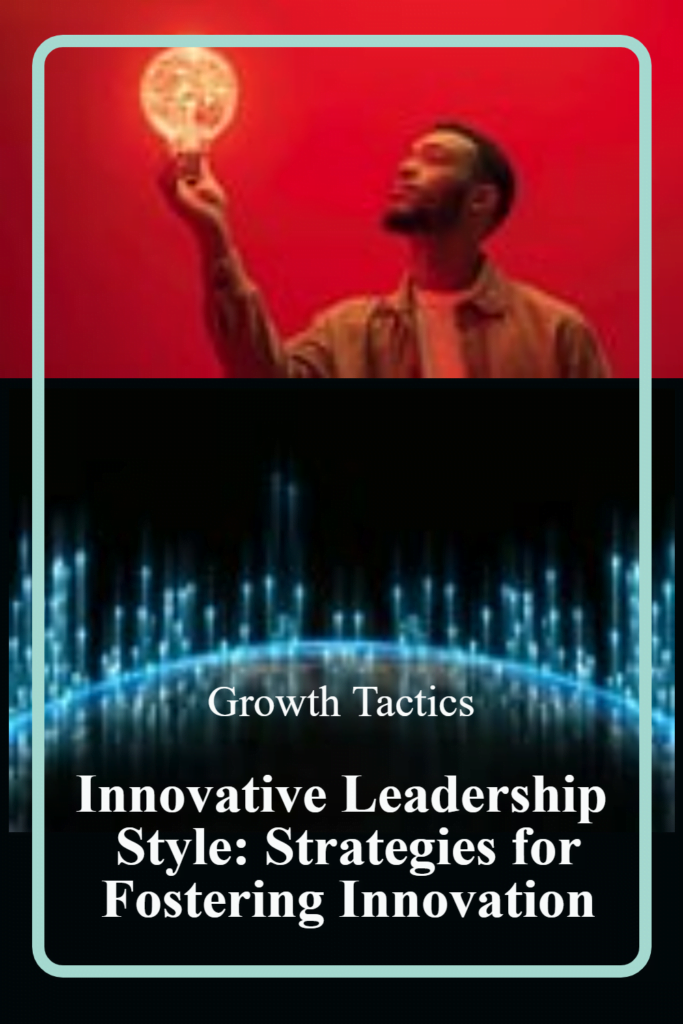Innovative leadership is crucial in today’s fast-evolving business environment. It involves leading teams toward fresh ideas and dynamic solutions, breaking away from traditional practices to enhance competitiveness and customer satisfaction.
As an innovative leader in my workplace, I’ve actively fostered a culture that champions creativity and calculated risk-taking. This has involved molding an atmosphere where team members are encouraged to think unconventionally and experiment. My approach has not only been about leading from the front but also empowering colleagues to innovate autonomously, providing the necessary tools and guidance while giving them the freedom to explore new avenues.
This leadership style has enabled us to improve our processes significantly, integrating new technologies and methodologies to stay ahead. By positioning innovation at the core of our operational strategy, we’ve cultivated a work center that not only adapts to change but also thrives on it, driving the entire organization forward.
Jump To Section
Characteristics of Innovative Leaders

Innovative leaders have certain key characteristics that enable them to successfully drive innovation:
Visionary
Visionary leaders can see opportunities for innovation and growth that others may miss. They are forward-thinking and focused on the future, with a strategic perspective on where the organization needs to go. Visionary leaders inspire their teams with an exciting vision of what could be achieved through innovation.
Creative Thinking
Innovative leaders demonstrate creative thinking, coming up with ideas and solutions that are original and unexpected. They can make connections between seemingly unrelated things and imagine new possibilities. These leaders encourage creative thinking in their teams as well.
Risk-Taking
Driving innovation inevitably involves taking risks and challenging the status quo. Innovative leaders have a higher tolerance for risk and are willing to experiment with new ideas that may fail. They create a culture where taking calculated risks is valued.
Future-Oriented
Innovative leaders take a long-term perspective, focusing on where the organization needs to be in the future rather than being bound by the present. They can anticipate future trends and consumer needs and position the organization for long-term success.
Open to New Ideas
Innovative leaders have an openness to new ideas, even if those ideas seem unconventional at first. They actively listen to suggestions from team members and customers, encouraging the free flow of ideas. These leaders are flexible and willing to change course based on new information.
Developing an Innovative Leadership Style
One of the most important aspects of innovative leadership is developing a style and approach that fosters innovation within teams and organizations. Leaders play a pivotal role in creating a culture where new ideas, creativity, and experimentation can thrive. Some key strategies innovative leaders employ include:
Fostering a culture of innovation – Innovative leaders focus on establishing norms, values, and ways of working that support innovation. This means encouraging ideation, being open to new concepts, providing time and space for brainstorming, and rewarding both creativity and experimentation. Leaders must model the innovative behaviors they want to see.
Encouraging ideation and brainstorming – Idea generation is critical to innovation. Innovative leaders actively promote ideation sessions, design thinking, and brainstorming activities to spark new concepts. They tap into the creative potential of all team members, not just designated innovators. Leaders also provide frameworks to help harness ideas.
Being open to experimentation and failure – Innovation inherently involves taking risks and learning through trial and error. Innovative leaders allow for and encourage experimentation, testing of prototypes, and small failures as part of the innovation process. They know failures will occur but can provide key learnings.
Providing resources for innovation – Leaders must dedicate time, money, people, technology, and other resources to innovation initiatives. This enables teams to explore ideas, develop prototypes, run experiments, and turn concepts into reality. Innovative leaders fight to secure resources, protect innovation teams, and invest in the ecosystems that support innovation.
By taking these approaches, leaders can develop the innovative leadership style needed to drive real transformation, change, and new value creation within modern organizations. The strategies empower individuals, unlock creativity, and allow innovative thinking to flourish.
Strategies for Driving Innovation

Innovation doesn’t happen by accident. Leaders need to take an active role in fostering innovation through their strategies and actions. Here are some key strategies innovative leaders employ to drive innovation:
Setting Clear Goals and Metrics
Innovative leaders set clear goals for innovation that align with business objectives. This includes defining what success looks like through measurable metrics like a number of new products launched, revenue from new products, or percentage of ideas implemented. Setting goals gives teams a north star to work towards. Leaders need to communicate goals consistently and track progress.
Aligning Teams and Stakeholders
Driving innovation requires alignment across the organization. Leaders need to get buy-in from stakeholders and motivate teams towards the innovation goals. This involves communicating the importance of innovation and showing how it ties to business success. Leaders can build alignment through workshops, town halls, and team meetings focused on innovation strategy.
Developing Processes and Workflows
Innovation doesn’t happen in a vacuum. Innovative leaders develop structured processes like stage-gate product development and define workflows that move ideas from conception to launch. This includes ideation, prototyping, testing, funding allocation, and launch. Well-defined processes remove bottlenecks and speed up innovation.
Providing Training and Development
Leaders invest in developing skills for innovation like creative thinking, collaboration, and design thinking. Training helps teams generate more and better ideas and equips them to execute on innovation strategy. Leaders can provide access to courses, workshops, innovation boot camps, and learning resources. This builds organizational capabilities.
Collaboration and Buy-In
Getting buy-in from stakeholders and team members is crucial for innovation success. Leaders must foster collaboration across departments and empower employees to contribute ideas.
To drive innovation, leaders need to align stakeholders around a common vision. They should communicate the importance of innovation and get input on the organization’s innovation strategy. An inclusive process builds trust and gets people invested in innovation efforts.
Leaders also need to break down silos and encourage cross-functional collaboration. Innovation often happens at the intersection of different perspectives, skills, and knowledge. Leaders can create opportunities for team members from various departments to brainstorm and work together on innovation projects.
Finally, leaders must give employees latitude to innovate. They can provide training to develop new skills and creative thinking. Leaders should encourage experimentation and celebrate failures as learning opportunities. Empowering people at all levels to ideate and contribute builds an innovative culture. Employees who feel valued and supported will drive innovation.
Overcoming Resistance to Change
Implementing innovation and change initiatives often faces resistance within an organization. As a leader driving innovation, it’s critical to understand and address this resistance. Here are some strategies innovative leaders can use:
- Communicate the why and benefits of innovation. Make a clear case for why the innovation is valuable and how it will benefit the organization and team members. Be transparent about the reasons for change and how it aligns with company goals and strategy. This builds understanding and gets people on board.
- Be transparent about changes. Don’t spring changes on people unexpectedly. Keep communication open and give advance notice of upcoming changes. Provide context and background to reduce uncertainty. Being transparent helps overcome skepticism.
- Involve team members early on. Get input from team members during the innovation process. This creates inclusion, gives them ownership, and surfaces concerns early so they can be addressed. Early involvement leads to greater engagement.
- Offer training and development. Ensure team members gain new skills needed for innovation initiatives. Training demonstrates the company’s commitment and support for their growth and success with changes.
- Reward innovative thinking and effort. Recognize contributions to innovation through rewards and incentives. This reinforces desired behaviors and a culture open to change. Even small rewards make people feel valued for creative thinking.
- Lead by example. As a leader, model the openness to change you want to see in others. Embrace innovation publicly, be willing to experiment, and tackle issues head-on. Your commitment sets the tone for the rest of the organization.
Overcoming resistance requires persistence, communication, transparency, and culture change. However innovative leaders find ways to bring people along the journey.
Measuring Innovation Success
Measuring innovation success goes beyond traditional metrics like revenue growth or new product launches. Leaders need to take a holistic view that evaluates both short-term wins and long-term goals. Some key ways to measure innovation include:
Key Metrics and KPIs
- Number of new ideas generated
- Percentage of ideas implemented
- Speed from idea to launch
- Customer satisfaction with new products/services
- Employee engagement in innovation efforts
Short Term vs Long Term
In the short term, leaders should look for quick wins that create momentum, like releasing an MVP version of a new product. Longer-term metrics involve evaluating if innovation efforts led to sustained growth, new business models, or changes in company culture over time.
Celebrating Wins and Milestones
Innovative leaders celebrate small wins and milestones, not just results. Recognizing teams for coming up with creative ideas, making progress on pilots, and bringing a product to market keeps momentum going. Publicly highlighting successes also reinforces the importance of innovation to the company.
Measuring a mix of short and long-term metrics helps leaders track if their innovation strategy is working. By celebrating small wins, they also signal that innovation is a priority and motivate teams to keep pushing forward. Evaluation is key for ensuring innovation efforts achieve the desired results and continue fueling business success.
Innovative Leadership in Action
Some of the most well-known companies have succeeded due to innovative leadership. Leaders at companies like Apple, Google, Amazon, and more have demonstrated how an innovative leadership style can transform an organization.
For example, Steve Jobs is considered one of the most innovative leaders of our time. He had a vision for Apple that went against the status quo of the tech industry at the time. He pushed boundaries with innovative products like the iMac, iPod, iPhone, and iPad. Jobs created a culture of innovation at Apple by thinking differently, taking risks and never settling for mediocrity. He inspired his teams to come up with revolutionary ideas and gave them the creative freedom to experiment.
Jeff Bezos, the CEO of Amazon, also exemplifies innovative leadership. He is constantly looking to improve and invent, while also focusing on delighting customers. Bezos has transformed Amazon from an online bookseller to an everything store, while also expanding into cloud computing, artificial intelligence, and more. He encourages innovation at Amazon by creating small autonomous teams that can quickly test ideas. Bezos once said that it is always “Day 1” at Amazon, meaning they always operate with the energy and entrepreneurial spirit of a start-up.
Larry Page and Sergey Brin, the founders of Google, wanted to organize the world’s information and make it universally accessible. They developed an innovative search engine and web-based services by encouraging creativity among their employees. Google allows its engineers to spend 20% of their time working on passion projects, which has led to popular innovations like Gmail, Google Maps, and more. Page and Brin created a culture focused on innovation, allowing for constant experimentation and learning.
Developing an Innovation Strategy
An effective innovation strategy aligns innovation efforts with business goals and provides a plan for how innovation will be supported within an organization. When developing an innovation strategy, leaders need to take several steps:
Assess the Current State
Analyze the organization’s current innovation capabilities. Look at what processes and systems are already in place, where gaps exist, and what resources are available. This helps identify strengths to build on as well as areas for improvement.
Set the Vision
Define the desired future state. What does innovation success look like for the organization? Set clear objectives and goals for innovation. Articulate how innovation will create value and support larger organizational strategy.
Define Roles and Responsibilities
Determine who will be responsible for executing different elements of the strategy. Identify innovation teams, leaders, and individual roles. Outline the decision-making process and governance structure. Clarify how cross-functional collaboration will occur.
Allocate Resources
Assess the budget, people, time, and tools required to support planned innovation initiatives. Secure and allocate the necessary resources. This may involve trade-offs and shifts from other areas. Plan budgets over multi-year time horizons to fund longer-term innovation.
With a well-defined innovation strategy, leaders can then cascade plans across business units, set metrics and targets, and take steps to successfully implement the strategy. The strategy provides crucial alignment for innovation efforts across the organization.
Conclusion and Key Takeaways
Innovative leadership is critical for organizations that want to thrive in today’s rapidly changing business landscape. Throughout this article, we’ve explored various strategies and approaches leaders can use to foster innovation within their teams and across the organization. Here are some key takeaways:
- Innovative leaders think differently – they are visionaries who are not afraid to challenge the status quo and try new things. They have an entrepreneurial spirit and are comfortable with change and uncertainty.
- Leadership style and organizational culture set the tone for innovation. Leaders must create an environment that encourages creative thinking, collaboration, risk-taking, and continuous learning.
- Buy-in and alignment are essential. Innovative leaders communicate their vision effectively and get team members excited about innovation goals. They also ensure alignment between innovation strategy and business objectives.
- Innovative leaders develop the right skills in their people. They focus on hiring for creativity, initiative, and collaboration. They also provide training to build innovation competencies across the organization.
- Ongoing measurement of innovation initiatives is important. This includes assessing ROI as well as intangibles like employee engagement, customer satisfaction, and brand reputation.
The role of leadership in innovation cannot be overstated. Organizations need leaders who can set the vision, inspire the team, take smart risks, and create a culture of learning and creativity. With the right leadership, companies can build a sustainable innovation capability that drives growth and long-term success. The time is now for leaders to embrace innovation as a core competency and lead their organizations confidently into the future.


